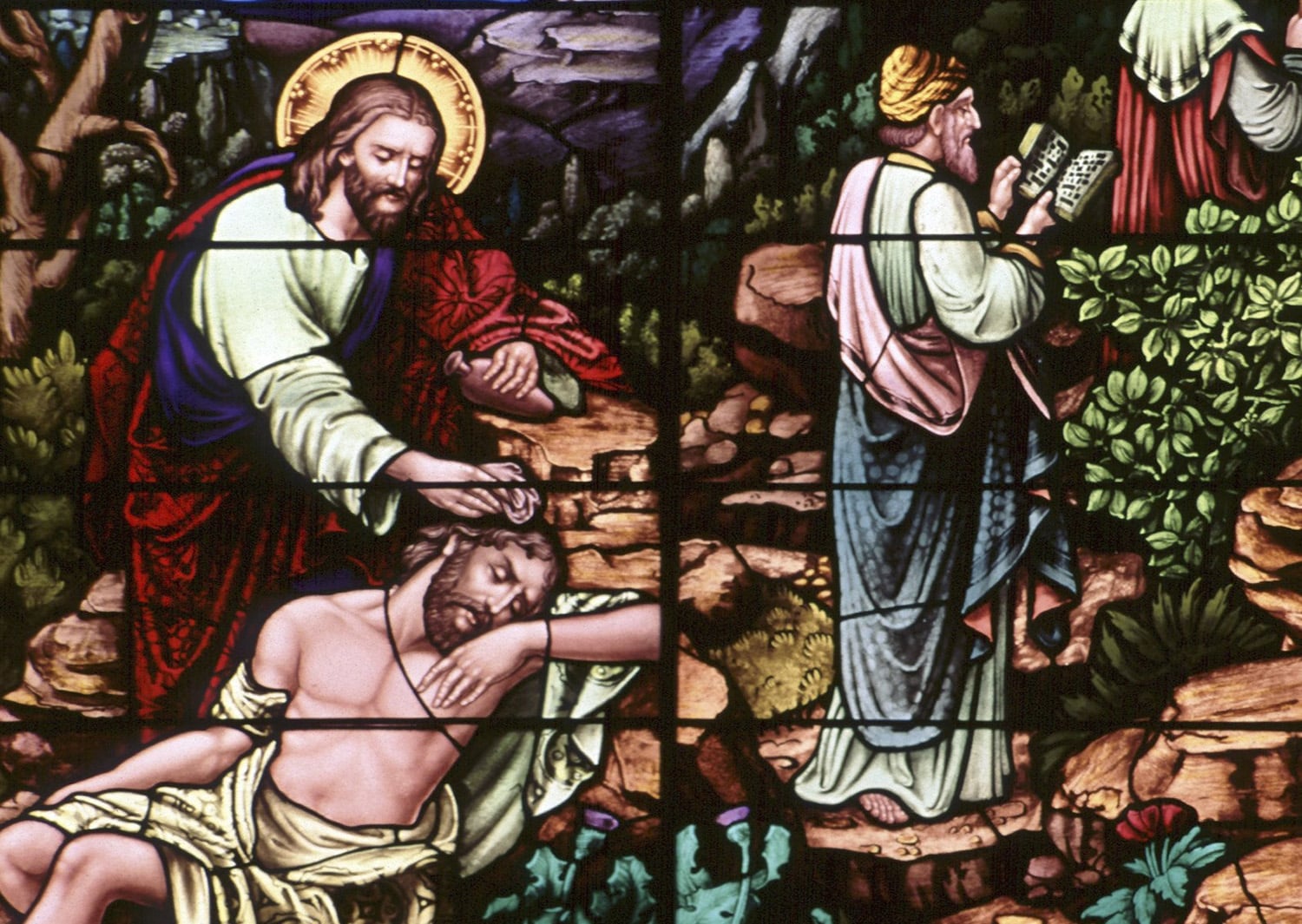Among the parables, the Good Samaritan is one of the best known. Year after year, priests explain it in terms of the corporal works of mercy (though, year after year, fewer priests use that term). We are called to bind the wounds of our fellow man. Don’t be like the priest and the Levite. Who is our neighbor? Everyone we meet.
And that interpretation is fine, as far as it goes. But the Fathers of the Church took it somewhat farther. They went beyond the surface level of the parable and delved into its deeper spiritual meaning.
From Cyril of Alexandria to Origen, from John Chrysostom to Basil the Great, from Ambrose to Augustine, the Fathers are remarkably consistent in seeing in the parable of the Good Samaritan a summary of the whole of salvation history, and the role that we are called to play as members of the Body of Christ.
How the Fathers read it
“A certain man went down from Jerusalem to Jericho … ” (Lk 10:29-37). The “certain man” was Adam, the father of us all, who descended from Paradise (Jerusalem) to Jericho, which was traditionally identified with the Moon, the heavenly body that grows and decays, dies and is reborn, and thus represents man. He “fell among robbers,” the minions of Satan, the prince of this world, who left him “half dead” — that is, stripped of his immortality, wounded in his will, unable to save himself.
A priest and a Levite, representing the Law and the Prophets, pass by, because they are unable to bind up his true wounds, which aren’t merely physical but spiritual. Only the Samaritan, which means “guardian” — that is, Christ — comes down from the heavenly Jerusalem armed with wine and oil and bandages, to clean man’s wounds with the Blood of his Passion, to salve them with the chrism of sanctification, to bind them and make him whole once again.
And having done so, Christ sets man “upon his own beast,” uniting him through baptism to the body he assumed when he became man for our sake, and takes him to the inn, which represents the Church, which the unbaptized cannot enter. There he gives the innkeeper, the head of the Church, two coins that represent the Old and the New Testaments, and charges him to care for the man until he, Christ, returns at the end of time.
Called to ‘Walk With One’
It is unlikely that you have ever heard a priest explain this parable in the manner of the Fathers, but having arrived at the end, we now hear Christ command us to “go and do likewise,” and his words carry a depth that they did not when we previously heard the parable. For we are both the man who went down from Jerusalem to Jericho and was beset by robbers and the man who, united to Christ and brought into the Church, must become the Good Samaritan ourselves, and clean and salve and bind the spiritual wounds of others, and bring them to the Church so that they, too, may “go and do likewise.”
Yes, the surface level of the parable — the corporal works of mercy — still applies, but the parable takes on a greater urgency when we recognize, as the Fathers did, that Christ is calling us, as members of his body, to unite others to him, to bring them to his Church, and to instruct them to “go and do likewise.”
It is unlikely that you have ever heard a priest explain this parable in the manner of the Fathers …
Here in this mission year of the National Eucharistic Revival, strengthened and energized by the experience of the Tenth National Eucharistic Congress in July in Indianapolis, we have been commissioned to “Walk with One,” to become the Good Samaritan to one person who, lying broken on the side of the road, is in desperate need of the spiritual healing that only the love of Christ and the sacramental life of his Church can provide. We are called to go beyond the surface level of the parable of the Good Samaritan and, with the Fathers of the Church, to evangelize men and women fallen among the robbers of sin and left half dead, awaiting us to proclaim the Good News of our Savior.







